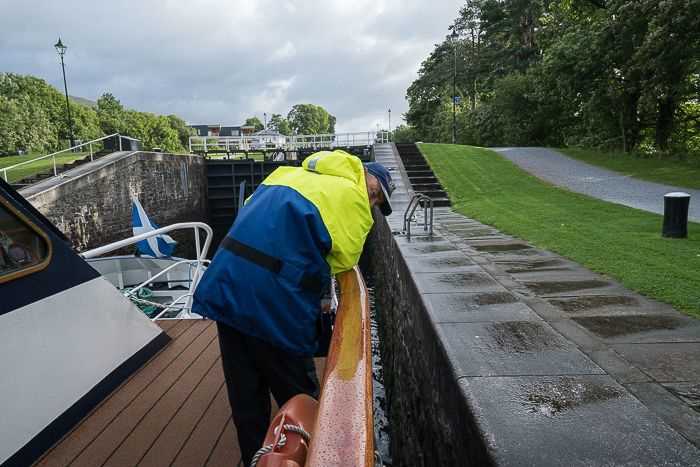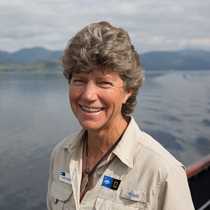Today we started our northeast journey up the Caledonian Canal. We will follow the canal to the end of our journey in Inverness. Our morning began with the ascent of Neptune’s Staircase, a series of eight locks that raise the canal by 62 feet over a quarter of a mile. Then it was a lovely sail up the lush green-bordered canal. As we went, we heard a presentation on how to create a story with photography.
Between Corpach and our day’s destination at Fort Augustus, we went through many notable features of the canal. A stretch beyond Neptune’s Staircase was the hand-cranked Moy Bridge, the last-remaining working, Telford-designed bridge on the canal. Then it was the verdant, tree-lined Laggan Avenue, a narrow section of the canal where trees were planted to stabilize the spoil piled on the canal banks. Shortly after Laggan Avenue, the ship entered Loch Oich, the highest part of the canal at 106 feet above sea level.
After lunch, we had the chance to disembark and walk a stretch of the canal from Kytra Locks to Fort Augustus, where we will spend the night. This small town was established as a fort in 1729, as part of the effort to subdue the Jacobites. It is named after William Augustus, second son of King George II, who led the government troops at the Battle of Culloden.
A second walk was offered later in the afternoon. The circular route meandered through the pastures, forest, and farmlands surrounding Fort Augustus. Along the way, we paused at the Kilchuimen cemetery, where poet Robert Burns’ close friend John Anderson is buried. In the peaceful graveyard with its towering yew trees, we read the poem Burns’ wrote for his friend, “John Anderson, My Jo.” Then, surprisingly enough, behind the gravestone, a whiskey bottle appeared and “Slainte!” We toasted to a wonderful week.
During Recap, we heard about the walking culture of Britain and the many trails and tracks that have been used for centuries—some that we have walked. After another fantastic evening meal, we had time to explore Fort Augustus.









